Twelve miles North West of Hartland Point and the North Devon coast lies the rugged granite island of Lundy. Just three miles long, this little island of volcanic origin lies right at the entrance to the Bristol Channel, directly in the path of what once were the major shipping routes to the coal ports of south Wales and Bristol itself.
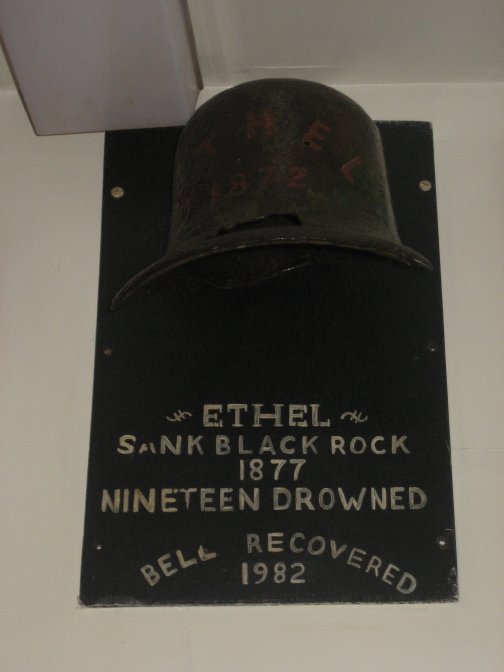
Although Lundy has probably more than its’ fair share of shipwrecks, it is nowhere near what it could have been, considering how many ships have passed this way in the last two centuries alone. It is estimated that in its heyday, almost a million ships passed the island every year. Even so, in 1786, the merchants of Bristol were so concerned at the losses suffered around the island, that they offered to build and maintain a light house at their own expense.
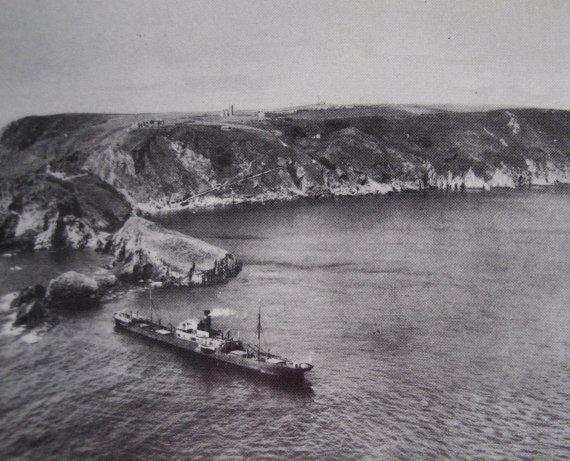
Lundy has a recorded history going back to the time of King John and since then its ownership has changed many times. With only one landing place and three hundred foot high cliffs, Lundy is a natural stronghold and it’s no surprise to find that over the years it has been home to pirates and smugglers alike. With no natural resources other than stone there was not much to offer anyone that wanted to settle on Lundy and anyone who did could be storm bound on the island for weeks.
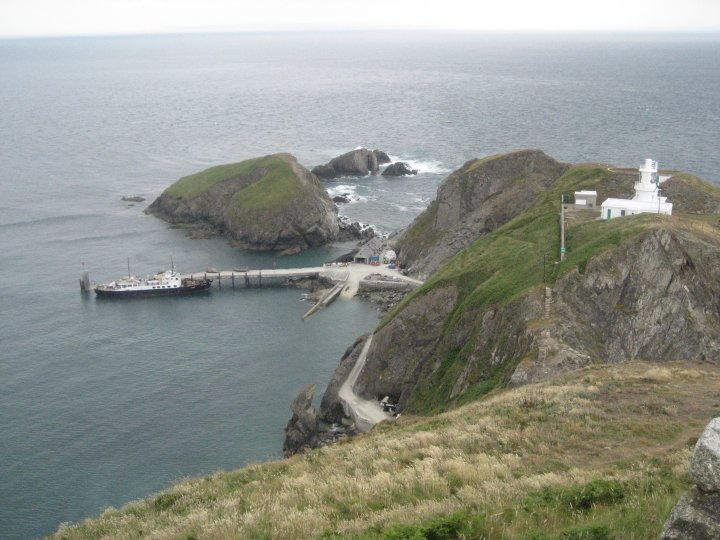
Today the island is owned by the National Trust but maintained by the Landmark Trust as a nature reserve. There are tons of birds to spot including puffins, loads of seals and dolphins and the occasional basking shark. It’s a magical place that’s easy to visit for the day by getting on the M.V.Oldenburg either from Ilfracombe or Bideford. If you want to stay on the island you can stay in chalets (you have to book well in advance) and there is a great pub that does excellent meals. It’s a great day out, and has the added attraction of a really fantastic wreck story with a walk to match.The wreck in question is the battleship H.M.S. Montagu.
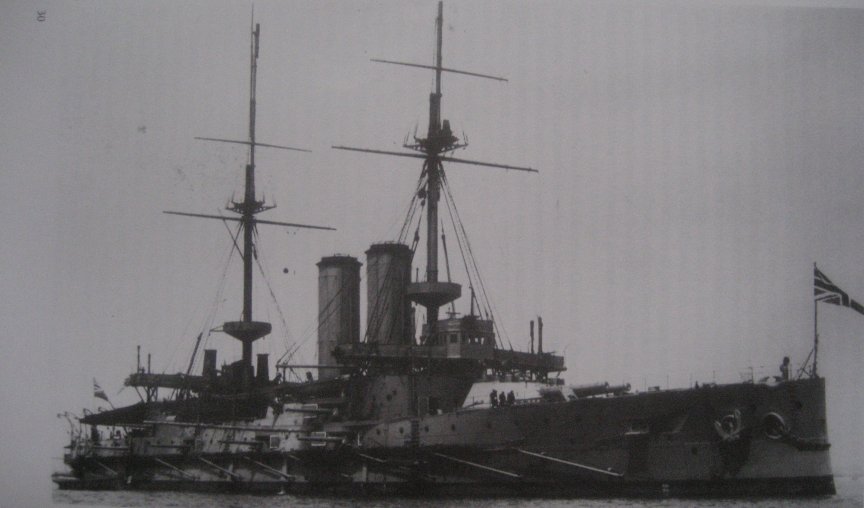
On the afternoon of 29 May 1906 the almost new battleship anchored off Lundy during a Fleet exercise. Her job was to communicate with the Isles of Scilly using the recently installed wireless telegraphic signalling apparatus. This equipment was the cutting edge of technology at the time and the Admiralty was expecting great things from it. However the distance to the Scilly Isles was too great, and in normal circumstances the Montagu would have steamed closer to the Islands and continued her trials. Unfortunately she was now enveloped in a thick fog and anchored as she was, right in the main shipping lane there was a real risk of another ship colliding with her. In the end it was decided to move closer to Lundy. As the great ship got under way soundings were taken, and as the Montagu crept closer towards the coast a strict lookout was kept. At about 2 o’clock in the afternoon, the depth was given as seventeen fathoms and the navigating officers was just congratulating himself in placing the ship safely four miles off Lundy when there was a great crash and grinding of metal, and the Montagu shuddered to a halt. Unknown to all on board, they had just run aground on the Shutter Rock at the south western corner of Lundy Island. The ship’s massive engines were put hard astern ripping off her propellers, but the Montagu was held fast and started to leak badly.
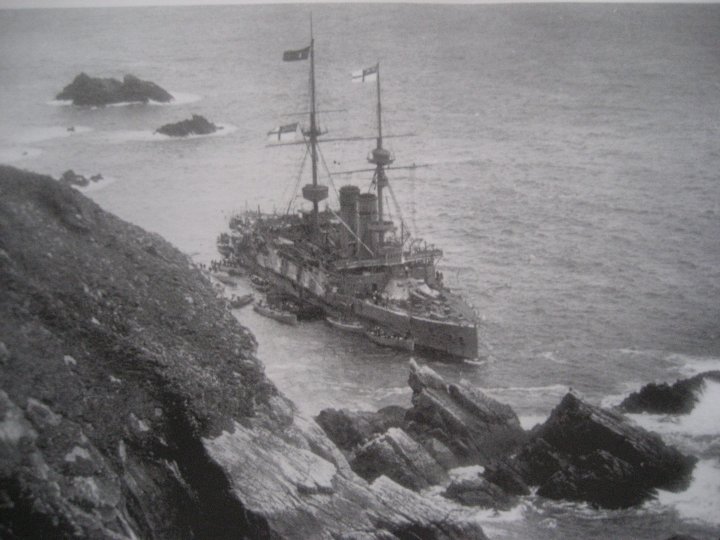
A landing party was detailed to scramble up the cliffs and go and find help. When the men got to the top of the cliffs they could hardly see where they were because of the fog but came across a rough path. If they had turned left they would have come across the lighthouse just half a mile away, but they turned right and marched the whole length of the island before stumbling into the lighthouse keeper’s cottage. The Naval Officer in charge of the party was convinced they were on the North Devon coast and railed at the poor keeper to contact the authorities. The lighthouse keeper finally realised that they thought they were at the Hartland Point Light and had to forcefully point out the Officers mistake by saying that it was hardly likely that he (the keeper) did not know which lighthouse he was serving in.

By now the Montagu’s lower compartments were all flooded and the hull was grinding nastily against the rocks. The Navy had no salvage equipment so they sent for the Liverpool Salvage Company and their most experienced officer Capt. Young. Since they had asked for their help you would have thought the Navy would have let the Salvage Company get on with it, but no. Capt. Young was relegated to the status of assistant and the Admiralty put in their own man, Admiral Sir A.K.Wilson. Although he was a brilliant officer he was completely out of his depth when dealing with the salvage of such a large battleship. Almost at once he ordered a huge flotilla of ships to bring all sorts of gear to the site. Working parties of hundreds of seamen were put aboard the Montagu, all with conflicting agendas. The upshot was chaos and confusion with everybody getting in each other’s way whilst the ship sank lower and lower in the water.
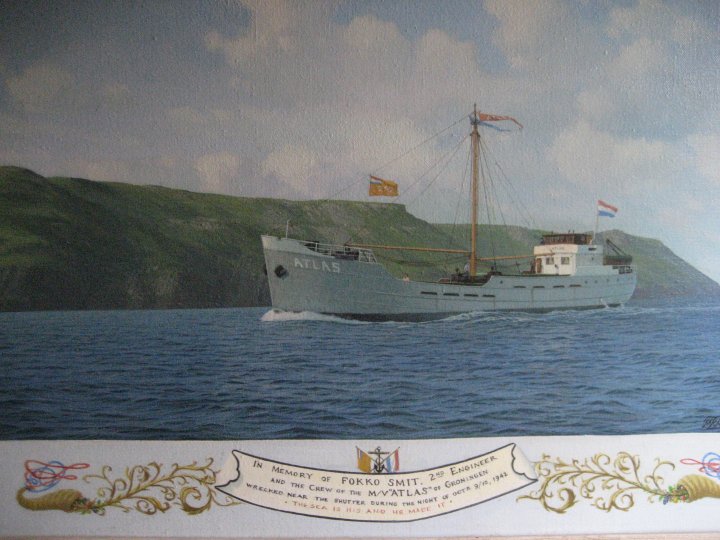
The arguments and conflicting ideas raged unchecked with Capt. Young of the Salvage Company being told to mind his manners. The last straw came when the Admiral seriously suggested that the Montagu be filled with cork and be allowed to float off on the high tide. It was by now obvious to all that the great battleship was lost and in desperation the Admiralty turned to Capt. Young to salvage something from the shambles. The first thing he suggested was the removal of the battleships huge 12 inch guns. Each of these weighed 48 tons and was worth a great deal of money. They also were badly needed by the Navy to rearm other ships as the supply of guns was extremely short. Overnight Capt. Young assumed complete charge of the salvage operation. All the ships were sent away along with the working parties. All that was left were the employee’s of the Liverpool Salvage Company.
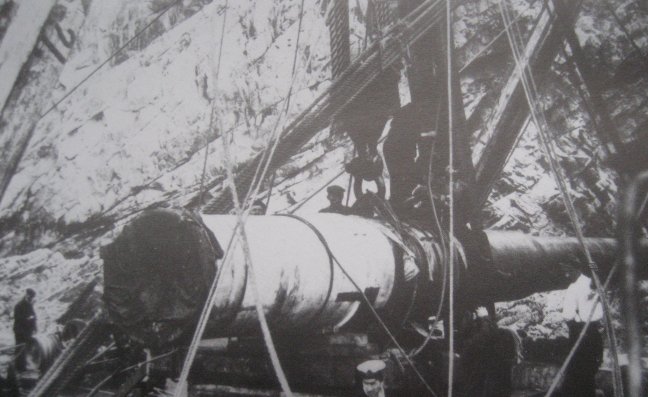
In order to remove the guns Capt. Young and his crew blew out part of the ships side to allow the barrels to drop down into the hull. He then had massive 60 ft sheer legs constructed to lift the barrels into the waiting lighters to be taken away to Pembroke Dock. Two barrels were removed in twenty one days, and to celebrate, a ‘Sods Opera’ (concert) was conducted on the wreck. The chief diver, Alf Gloyne, amazed everyone with a stunning tap dance routine, others played accordion and Capt. Young gave a spirited rendition of ‘Blow the man Down’ to a by now happy, and very drunk audience. The two after barrels soon followed and the crew then set about stripping out the condensers, pumps and tons of non ferrous metal. Even the propellers were recovered when the anchor of one of the salvage vessels got tangled up in their remains.
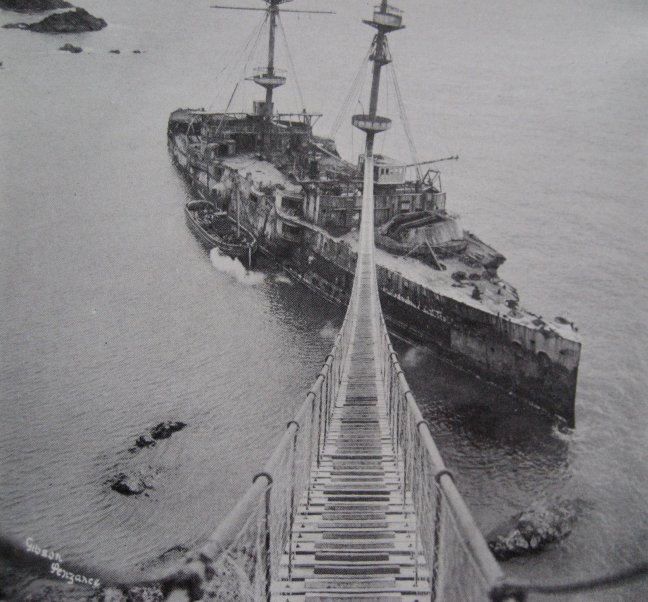
By now the official salvage operation was coming to a close. The Courts Martial had found both Capt. Adair and his Navigating Officer Lt.Dathan, guilty of hazarding the ship, and they were both severely reprimanded. With the end of these proceedings the Montagu was ‘paid off’ and in January 1907 the Navy put her up for auction to be broken up where she lay. She was bought for £4250-00 by the Syndicate of South Wales Adventurers and it proved to be a wise investment. An aerial footway over 500 ft long was constructed from the top of the cliffs to the roof of the Montagu’s chart house, and also a path was made down the side of the cliff using granite steps and then footholds were carved into the rock. These became known as the Montagu Steps and you can still see them today.
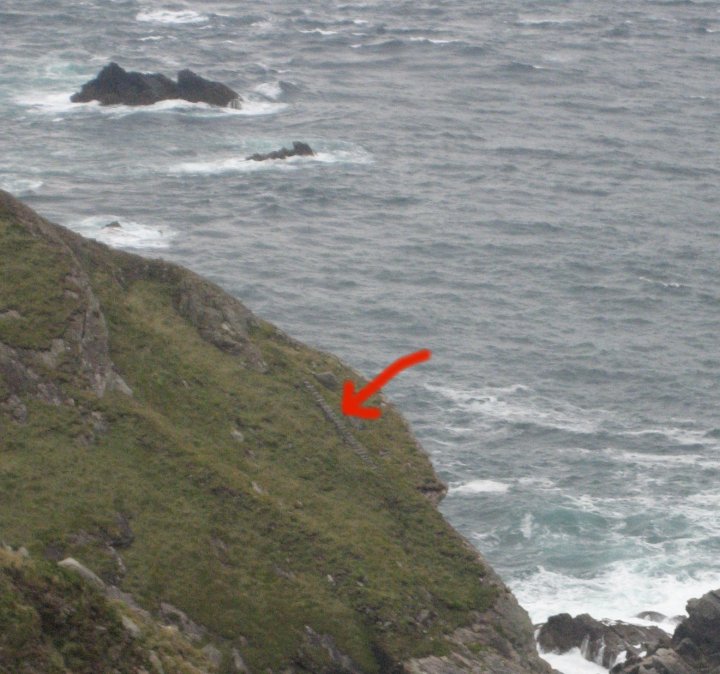
Work was only possible for a short time at low tide, and so speed was of the essence. Lighters were brought alongside and slowly piece by huge piece, the armour plating was removed along with a vast amount of copper and brass. Explosives were used extensively and this had the effect of finishing of any structural strength left in the ship. By October 1907 huge storms, the worse Lundy had seen for years started to pound the wreck to pieces and so the salvors suspended their operations and retired to count their profits. Soon the Montagu disappeared completely beneath the waves and all that was left to mark her passing were the granite steps and a few bits of rusting metal that supported that fantastic Ariel walkway.
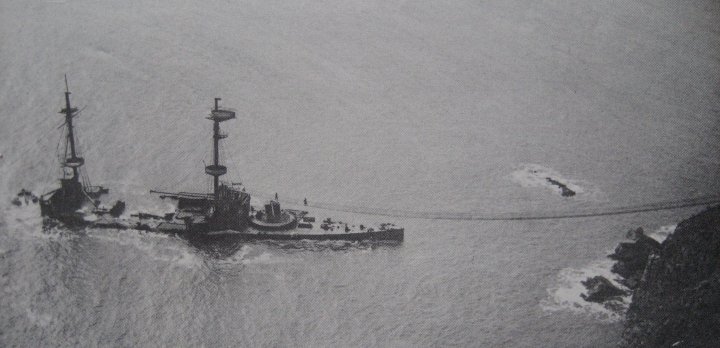
I am very grateful for the following information and photo from Chris Howell. He has a walking stick made by his great Grandfather’s company, the shaft of which came from the deck timber of the Montague. These sorts of sticks are known as ‘relic canes’. I confess that I had never heard the term before so Chris sent this photo of the inscription on the cane. You can just make out the inscription ‘WOOD FROM H.M.S. MONTAGU. The siver Cartouche is inscribed LS, and the hallmark date is 1907.The stick is complete with original ferrule and original length of 36”.
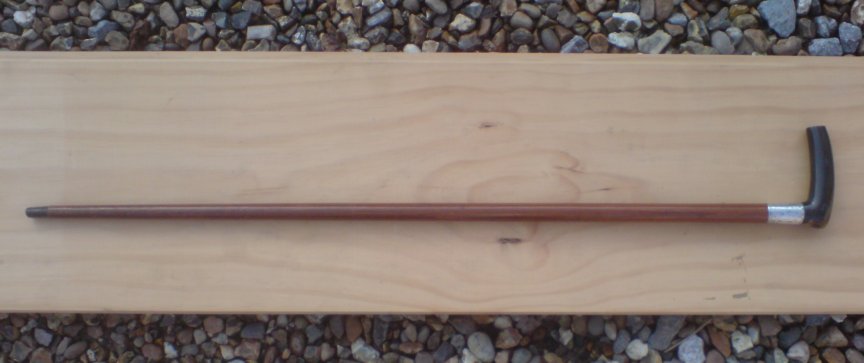
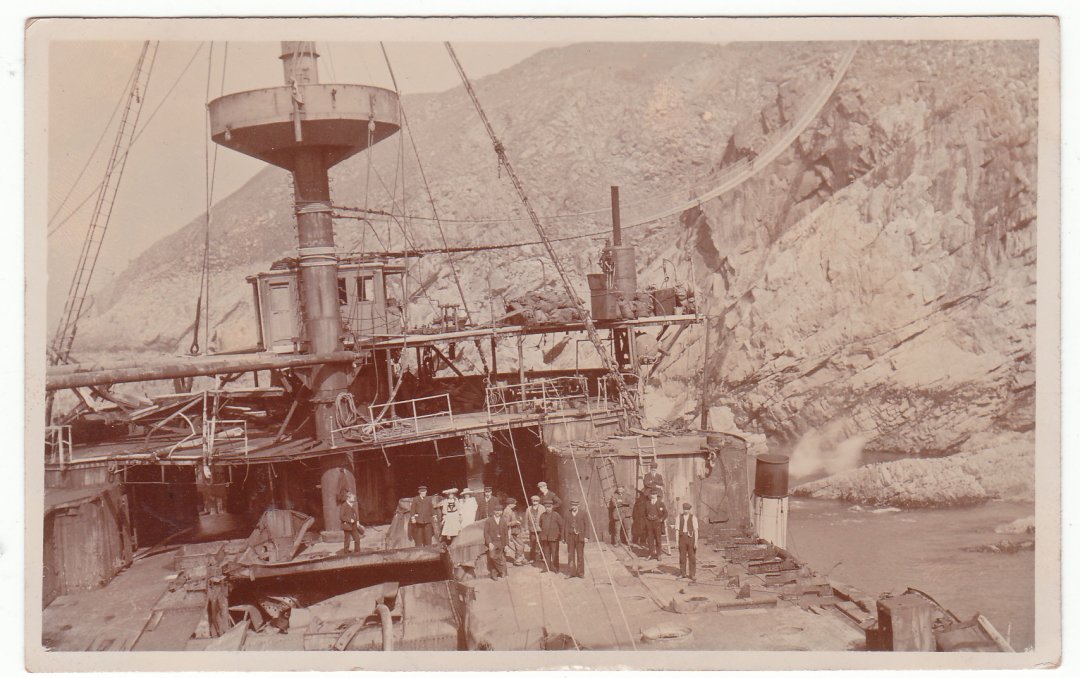
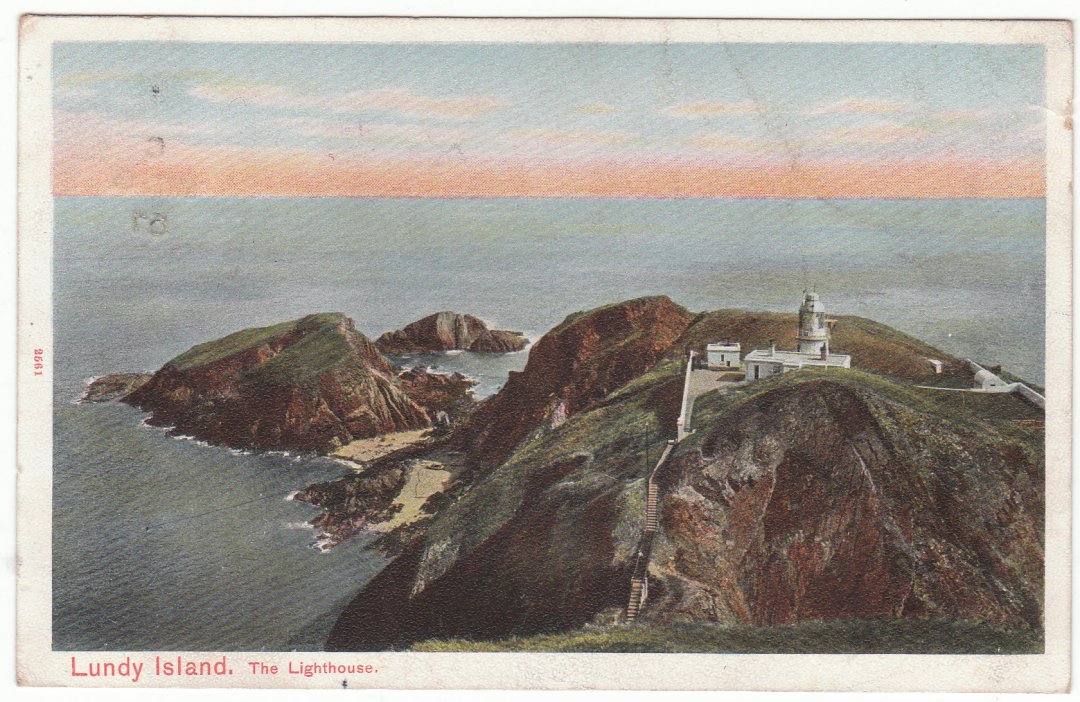
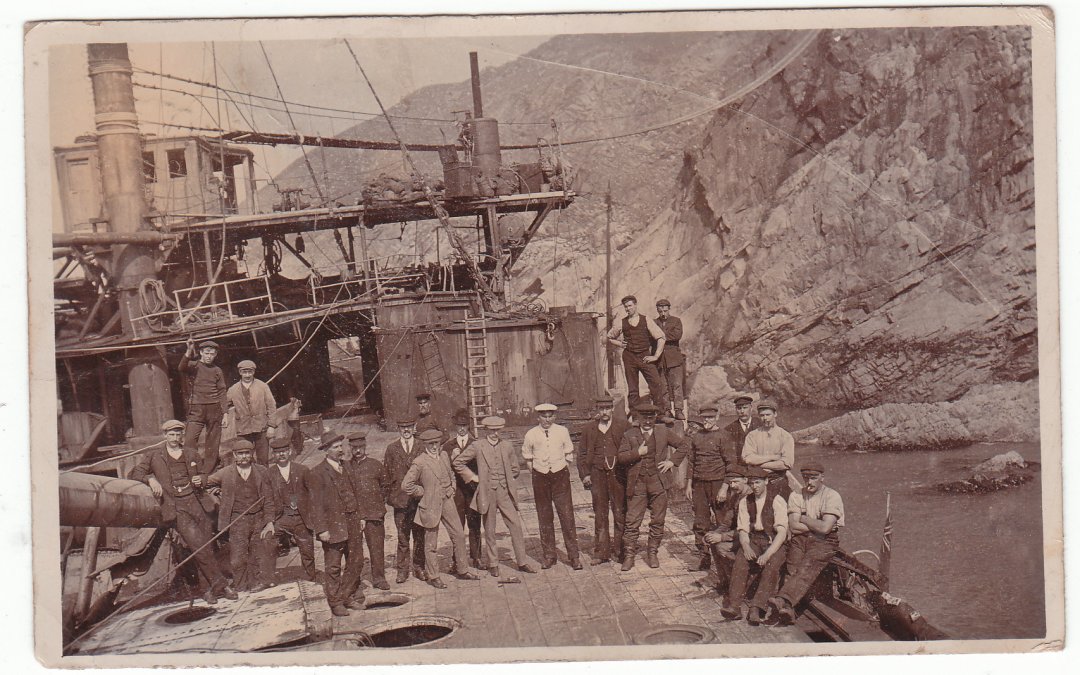
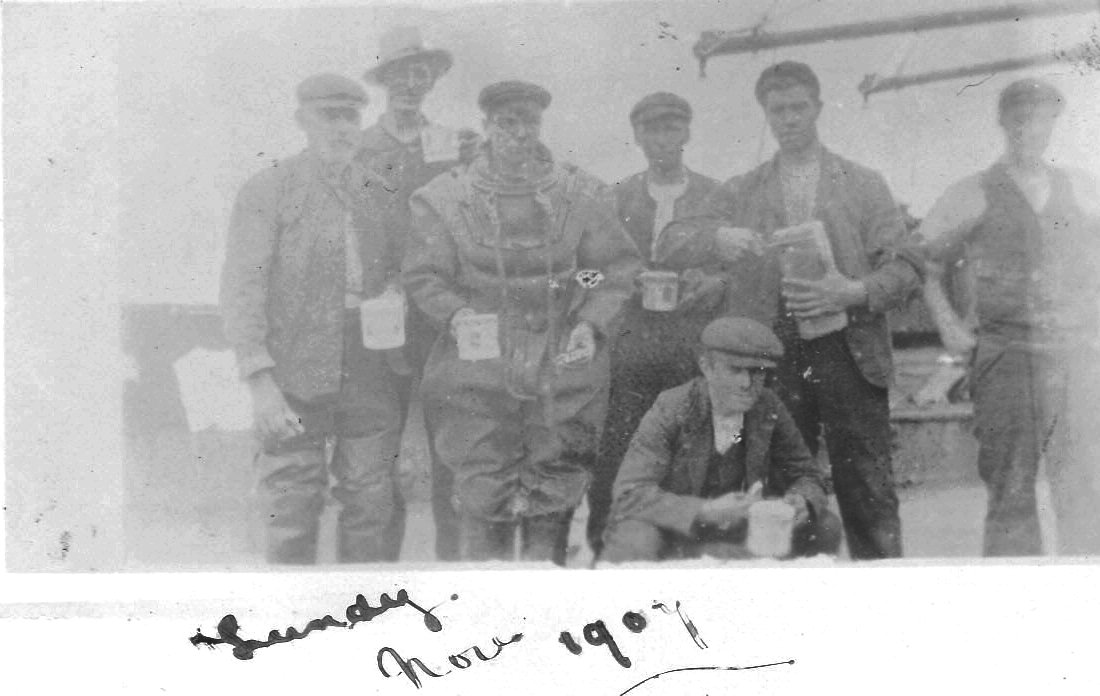

wayne says
A very interesting and well written account.
Well Done !!!!!
Judy Luxford says
My great uncle was a light house keeper on Lundy in 1906…do you know the nake of the keeper involved and whether he was based at the North or South Light ( the old light was replaced by these two at either end of the island because the original was often shrouded in fog!
Paul Metcalfe says
Excellent & accurate account of the loss of the Montagu……..You have obviously been to Lundy?…….kind regards Paul.
chris Howell says
I have a walking stick, made by my Great Grandfathers company, the shaft of which came from the deck timber of HMS Montague – know as a ‘relic’ cane. The account you have written is very interesting – well done indeed and thank you.
Patricia Martin says
Are you familiar with a small book written about the wreck of the Montague back in the 1980’s by Jill Davis?
Chas Townley says
Great little account of the Montague – currently about to list a card on ebay and will include this as a link.
Eric Pilcher says
Any articles on HMS Montagu are of interest to me as my Grandfather was actually serving on the ship when she went aground. Unfortunately he died in 1908 having contacted TB while serving on HMS Highflyer.
Margaret Tudge says
My Grandfather was Captain Adair’s valet on board The Montague when she grounded. He always said it was 2 O’Clock in the morning when she went aground… on the 30th May, which was incidentally, his birthday! Does anyone know what happened to the Ship’s Jack? Is it in the Ilfracombe Museum?
Owain Williams says
I have a good picture of the ship aground
Simon Duff says
I have just come across a photo album of my grandfathers which has some amazing pictures of the 12″ guns being hoisted out and other operations during the post stranding period.
gillian manning says
I found your website of much interest as my great grandfather James Ellis, a timber merchant and coachbuilder in Ilfracombe, also made walking sticks from the teak deck timbers of the Montague for sale to visitors. No doubt many local merchants bought timber from the ship and did likewise.
john wallis says
My great grandfather was a cabinet maker in Ilfracombe. my father told me he went to Lundy to purchase timbers.I think teak and mahogany, off HMS Montague a aunt of mine still has a dressing table he made.The local merchants good fortune.
john wallis says
Forgot to say my great granfather was called Thomas Strout
A.Shiers says
My father owns it
Peter C Smith says
Could Margaret Tudge kindly inform me by e-mail of her Grandfather’s full fore names please? I am writing a book on the incident and wish to have it totally correct. Thank you very much.
Peter Smith says
Would Margaret Tudge, or anyone else, kindly give the full name of her grandfather who was Captain Adair’s Valet at the time please?
Thank you
Kerry Moule says
My Great Grand father,Ernest Henry Youd,was serving on the Montague when it ran aground.From an old newspaper cutting he was interviewd in 1965 in the the Clevedon Mercury North Somerset.”It was an extremely foggy day when the ship went aground on the west side of Lundy.I was down below working as a stoker and fortunately the ship kept an even keel.But holes were ripped in her bottom and she soon flooded.”Mr Youd remembers well the ominous thud of the ship before she came to rest.
Hope this is of interest to you.We will look forward to reading your book when its finished!
mike says
hi, my great grandfather was the cabin boy on this ship, is there a crew list?
Nick Hunter says
My grandfather, Ewan Mitchell, was the RN naval constructor put in charge of the salvage. I have two books and dozens of photos and letters dealing with the recovery attempt.
Nick Hunter says
My grandfather, Ewan Mitchell, was the RN naval constructor put in charge of the salvage. I have two books and dozens of photos and letters dealing with the recovery attempt.
I’ll try to post some stuff online
francis brooke says
in the 80s i dived on the montgomery , which i now realise is the montague , as a member of the the rhondda sub aqua club,it had a air of mystery and always stuck in my mind, if my memory serves me well it is still intact
Mary Jones says
I am trying to find out details of the death of Captain James Smith, who is said to have been washed overboard and drowned somewhere off the coast of South Wales, date some time after 1910 (I think). The only info I have is that he died young. I have been through your site, but I can’t find any reference to him. Is this a name that you have come across? (I’m doing a family history search).
Michael A Knott says
Just come across this extremely interesting site. A recent visit to Lundy helped me appreciate what a fantastic task the salvage was under those dangerously high cliffs. My childhood was dominated by a photo of HMS Montagu on the rocks which adorned my Grandmother’s kitchen and it was always assumed that the family connection was my Grandfather who was in the Navy at that time but was tragically drowned off the Kent coast in 1933. Recent Family tree research has revealed that my grandmother’s brother, Able Seaman Edmond Wright 191541, and her brother- in- law, Po 1Class George Williams 150965 were both Ship’s Company at the time of the incident. Their service certificates show they were discharged from Montagu on 12 Aug 1906 so may have been involved in the early salvage efforts.
I am grateful for any information on this Ship’s story.
Tony Waters says
I came across the Montagu steps whilst recently on Lundy ,I had no Idea of the wreck Or the salvage operation that ensued. I later learned why the steps were there and the rusted steel rods nearby that looks like an upside down metal table which was the rope bridge anchor . Fascinating stuff.
Christopher Jones says
Research from the Glamorgan Gazette dated 12 March 1909 relates to a Mr Allday, the lighthouse keeper on Lundy who had been there 12 years. He was from London but had never left the island so had never seen a motor car. Although granted 2 weeks holiday each year he never took any leave. In 1909 the Coast Guard took responsibility for Lloyd’s signalling station and Mr Allday was retired. However, he decided to stay on the island. He recalls the incident involving HMS Montague for he had charge of the post office and telegraph office. “When the battleship struck near the Shutter Rock, the first the islanders had of the affair was from a breathless lieutenant, who had scaled in the fog the awful cliffs at the north end, and wanted to send a telegram from Hartland, not knowing that place was 12 miles over the water.”
David Farthing says
As a guide at Winchester Cathedral I have a great interest in William Walker (known as the Winchester Diver) who played a key role in the underpinning of the foundations 1906 to 1912, At one time it was thought he might have to temporarily leave the project to assist with the salvage work on the Montagu. Does anybody know if he actually went?
If anybody knows of an other salvage projects on which William Walker worked I would be delighted to receive any such information
Becca Black says
My grandfather Peter Pritchard was one of the men sent but Liverpool Salvage Company to work on the Montagu. He was a rigger. They lived under canvas through the freezing winter. He left a set of post cards of the salvage operation.